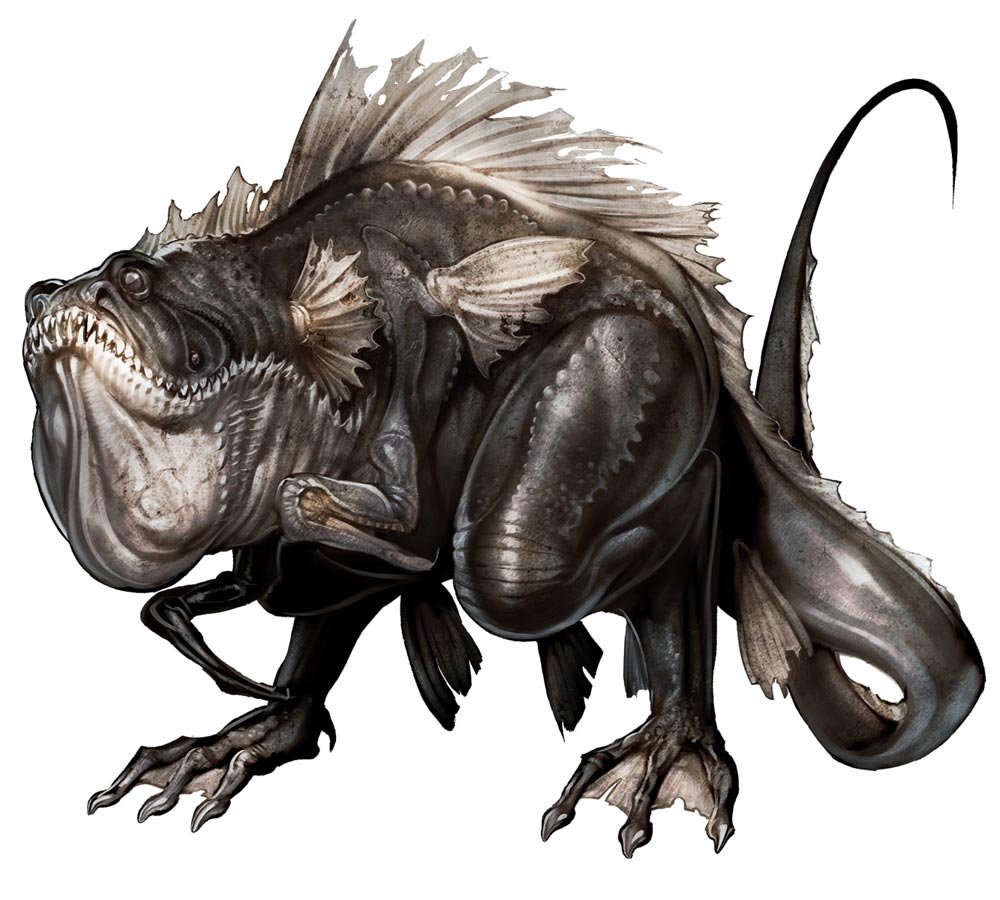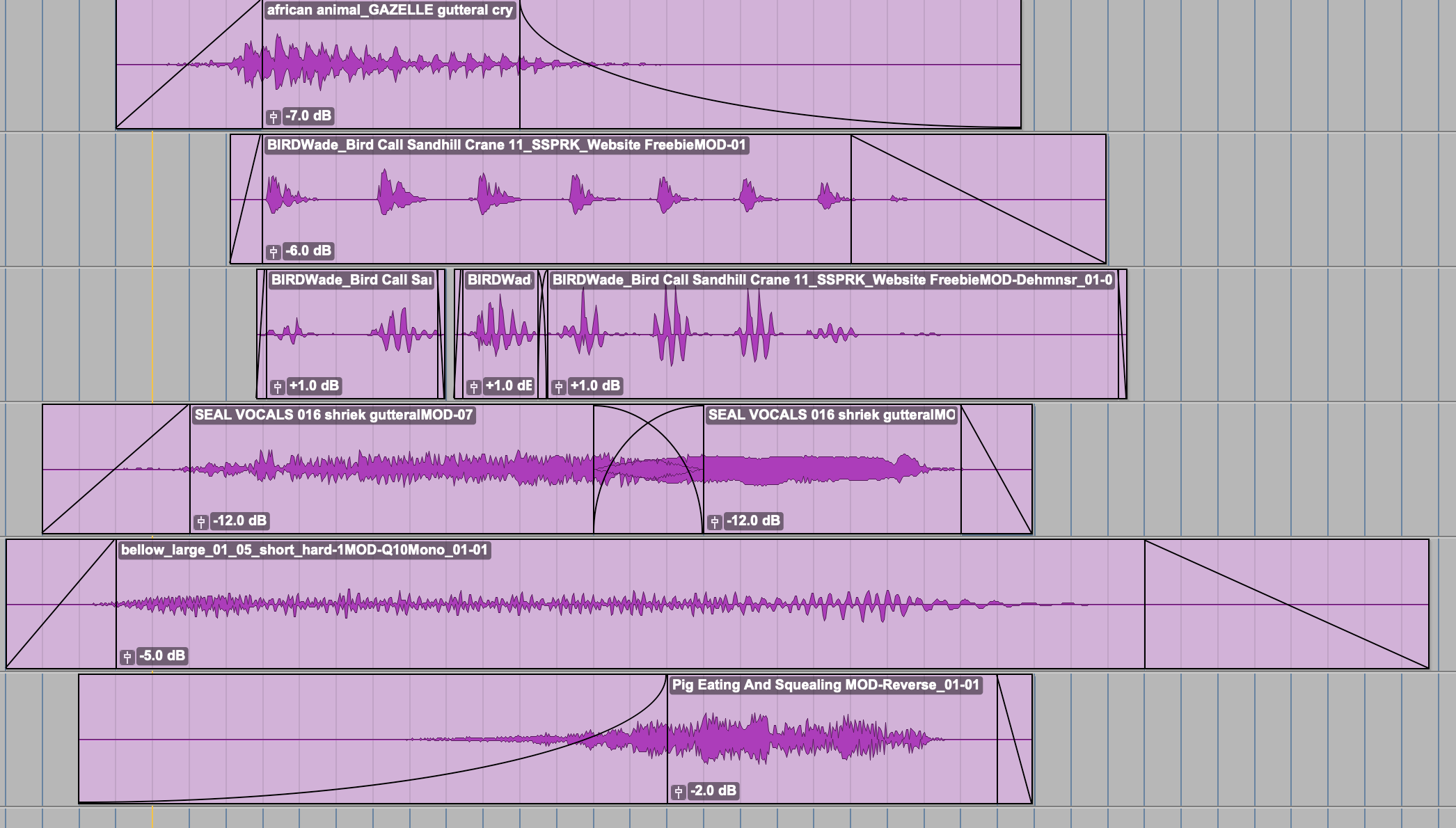WRITTEN BY JESSEY DRAKE
SOUND EFFECTS EDITOR, BOOM BOX POST
Creature vocals or monster vocals, if you will, are one of the more conceptually challenging elements to telling a story through sound. I always struggle with, “Is it real enough?” or “Is this vocal believable for this creature on screen?” Of course, that’s a matter of personal opinion and experience, but there are some approaches that make the design process of these vocals a little more palpable and easier to arrive at the “finished” product.
Approach #1: Vocal Recordings
One of the most rewarding experiences as a sound designer for me is taking my voice and making it into something entirely different. Our voices can become a limitless number of characters. Really the only thing stifling that potential is ourselves. Not every person is comfortable getting up in front of a mic and “roaring.” It takes practice and patience. If you’re just starting out, I suggest recording yourself alone in a room and being as over-the-top as you want to be, without the pressure of anyone watching you. But if that’s really not your thing, find a friend who would be willing and able to do your vocals for you. Now of course, there are some technical aspects into recording yourself or others for monster vocals and we have another great blog post written by Jacob Cook that details some of those tips. That post can be found here.
Approach #2: Sound Effects
The next approach in my eyes is probably the most traditional. It’s the classic way the dinosaurs in Jurassic Park were created. In this approach, we take animal sound effects (or any sound effects for that matter) and process or combine them to create creature vocals. This is where we really start to see conceptual design take hold. Here we have to look at the monster and say to ourselves “What would that sound like and what sounds do I need to make it sound like that?” We have to think of the creature as a character with a personality and distinguishing attributes. Is it big or small? Where does it live? Does it look like any certain animal you may know of? etc. And from those questions you ask yourself, you can then start to hear what that creature should sound like in your head, or at least start to derive some sort of idea. At the end of the day, we are always telling a story and creature sound design is a huge part of telling that story.
Like anything we want to master, we have to practice. One of the easiest ways to do that if you find yourself with some free time is to go on Google and search for some hideous monster, like this one shown below, and design what you would imagine they sound like. This one is by an artist who goes by the name Jae Wan Choi.
Approach #2, while it focuses very much on the characterization of a creature, it is also very much about how the sound effects you have chosen to represent your creature are combined, mixed and sometimes processed. I like to look at each vocal is terms of the sound envelope or the ADSR (Attack, Decay, Sustain and Release). The ADSR is basically the shape of the sound. And without getting too technical, look at the sound envelope or the shape of your creature vocal as having a beginning, middle, and end, and what kind of vocalization it is. Is it a scream? Is it a roar? It is a calm growl or ruckle? Each one of those vocalizations has to sound different and will look different in terms of their sound envelope.
So let's get into designing something for this creature, shall we? First, I chose my raw sounds — my sonic palette, if you will.
I first pitched each one down about 30%-40% in Soundminer before bringing them into my session. This creature seems huge, so I want to feel that weight. I then doubled the sandhill crane file and dropped the pitch of that file even more. I then ran that file through Metaflanger with some underwater settings. It does look like a frog/fish of some sort of water creature, so we’re adding to its characterization here. Using the same doubled crane file, I then ran it through Krotos’ Dehumaniser to give it that guttural ruckle-quality that I want to hear. For more information on that vocal plugin, we have another great blog post about it by Greg Rubin. You can find that here. I then synced the sound wave of the processed crane file to the just pitched crane file.
I want clarity here. I don’t want the vocal to sound like a jumbled mess. So editing it in sync with each other, keeps it clean and essentially that much more powerful within the vocal. From there, I edited down the seal vocal file to fit within the sound envelope length of the vocal. For the last file modification, I edited the bellow file down as well, but I also boosted the low and certain mid frequencies of that file with a Q10 Equalizer, to really bring out the frequencies that round out the creature vocal. Lastly, and certainly not least is how it is edited, laid out, and mixed within itself. You can see there is intention with the edits, fades, and how each file is balanced with the next.
Take a listen to the final product for this creepy looking monster:
As a sound designer, you must enter into designing creature vocals with purpose and intention. You might even want to have a plan. Designing sound effects, especially designing monster vocals, is kind of like music composition. We often don’t know where to begin or even more problematic, how to end. So go into it with a plan and an idea of how to get there. If you get to a point where you feel stuck in some sort of “design block,” take a step back, move on to something else and come back to it. Let the design breathe. It is a creature after all.
If you enjoyed this blog, check out these:
HOW TO MAKE A MONSTER ARMY
DRAGON VOCALS!
CREATING SPOOKY VOCAL SOUND EFFECTS FOR HALLOWEEN




